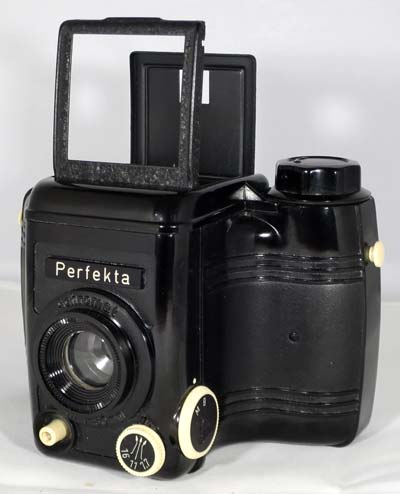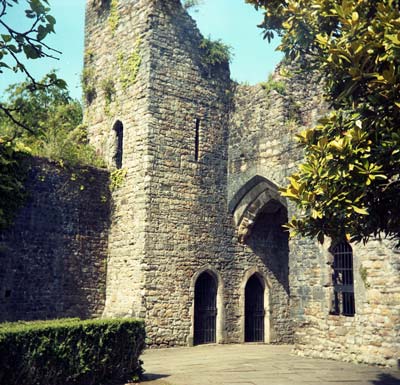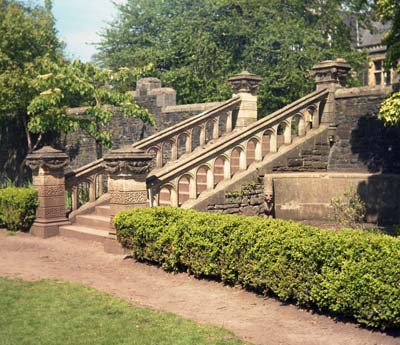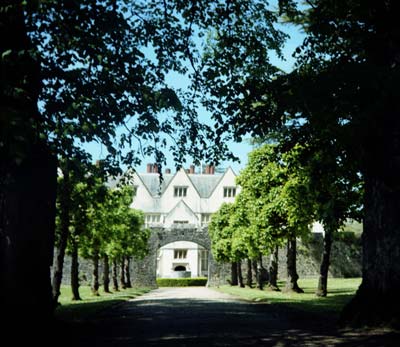Rheinmetall Perfekta
Specification

| Manufacturer | : | VEB Mechanik Büromaschinenwerk Rheinmetall |
|---|---|---|
| Produced | : | 1954 |
| Classification | : | Medium Format |
| Body Type | : | Solid Body |
| Construction | : | Bakelite |
| Film Type | : | 120 |
| Film Width | : | 62mm |
| Image Size | : | 6 x 6 cm |
| No. of Images | : | 12 |
| Lens Type | : | Achromat |
| Focal Length | : | 80mm |
| Focus Type | : | fixed |
| Focal Range | : | 8ft - Inf. |
| Aperture Type | : | Variable stops |
| Apertures | : | f/7.7, f/11, f/16 |
| Shutter Type | : | Leaf |
| Shutter Speeds | : | B, I(1/50s) |
| Size Open (w x h x d) | : | 135 x 135 x 95 mm |
| Size Closed (w x h x d) | : | 135 x 86 x 95 mm |
| Weight | : | 354g |
Art Deco Credentials
![]()
![]()
![]()
Noteworthy: Worth giving special attention
- Produced after the main Art Deco period.
- Bakelite body
- Curvilinear box body shape.
- Horizontal linear ribbing to body.
- White plastic highlights.
Description
The Perfekta is one of the series of cameras that were produced in the German Democratic Republic after World War II. The widespread use of Bakelite reduced the price of otherwise metal parts which were not easily affordable after the war. Rheinmetall was one of the largest German arms manufacturers before, during and after World War II. After the war they diversified to making cameras and other domestic products.
The Perfekta is made of black Bakelite with white highlights to the controls, the red window and strap attachment knobs. It has a curvilinear design with horizontal linear ribbing around the body. The camera is a good example of the persistence into the 1950s of the Streamline Moderne style which originated in the USA in the 1930s.
The achromatic objective lens has a decent aperture of f/7.7 that can be stopped down to f/11 and f/16. The stops are on a rotating blade that can be moved using a wheel on the front of the camera. It has a simple T/I shutter with a wheel at the side labelled M(Momentary) and B(Bulb). The shutter is coupled to the film advance so that double exposure is avoided. The viewfinder is a sports finder type which can fold down when not in use. The red window can be covered with a rotating metal blade which is controlled by a small wheel alongside. It has a tripod mount on the bottom.
On the shutter control selection wheel there is a "1" inscribed in a triangle along with the number 37/286/000. This shows that its production was for export outside the DDR.
The design of the Perfekta body is very much like the Druopta Efekta. However, the Efkta is more advanced with flash sychronization, three shutter speeds and more control of the aperture.
How to Use
This camera takes 120 film which is easily available. It supports instant(I) mode with a speed of about 1/50 sec. It has three aperture settings of f/7.7, f/8 and f/16. With a shutter speed of only 1/50 sec, make sure you brace the camera against your body or something solid and press the shutter smoothly to avoid camera shake.
If you don't want to bother with an exposure meter, follow the guide shown. It is based on the 'Sunny 16' rule. Film is so forgiving and will produce acceptable results even when over-exposed by 2 or 3 stops or under-exposed by 1 stop.
The table shown assumes the shutter speed is about 1/50s.
The table also assumes that the sun is at least 30 degrees above the horizon - that's 10am - 5pm on a summers day in the UK.
Remember that the exposure guide in the manual may not be helpful as it is based on the use of old film with a low ISO value.
Using ISO 100/125 film - shutter speed 1/40s
| Weather Conditions | Shadow Detail | Aperture | Exposure |
|---|---|---|---|
 Sunny SunnySnow/Sand | Dark with sharp edges | f/16 | +2 Stop Overexposed Acceptable |
 Sunny Sunny | Distinct | f/16 | +1 Stop Overexposed Acceptable |
 Slight Overcast Slight Overcast | Soft around edges | f/16 | Good |
 Overcast Overcast | Barely visible | f/11 | Good |
 Heavy Overcast Heavy Overcast | None | f/7.7 | Good |
 Open Shade Open Shade/Sunset | None | f/7.7 | -1 Stops Underexposed Acceptable |
Photographs taken with this Camera
Kodak Portra 160, Developed in Tetenal



